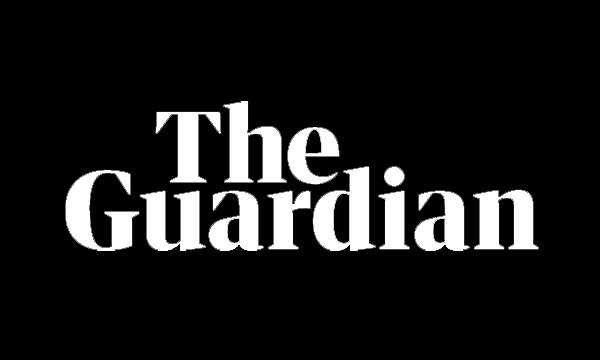
The tourist road from Dunkeld to Halls Gap is eerily quiet. Blackened trees stretch spidery branches towards a sky still smudged with smoke. The road is open but few cars take it save for a wildlife rescue vehicle inching slowly along, its occupants scanning the burnt-out forest for limping wallabies reported in the area. A lone currawong shrieks, invisible.
Fire ripped through this part of the Grampians/Gariwerd national park six weeks ago, and still burns on the other side of the mountain range – an immense rocky ridge jutting out through the smoke haze. But already new growth is starting to sprout. Green spikes burst from the charcoal stumps of grass-trees. Near a dry creek bed, tiny fern fronds unfurl out of the ash.
The small community of Halls Gap, nestled in the centre of the national park, should be teeming with people at this time of year. Instead it is haunted by fires.
“This is day 53 of us being in survival mode,” Josephina McDonald says. Three days after the bushfires sparked on 17 December, she had to evacuate herself, her staff and hundreds of visitors staying in the accommodation she runs at Halls Gap Lakeside tourist park and Grampians Getaway retreat.
When the roadblocks lifted after Christmas, 738 cancellations awaited her. “People were a little bit pissed off that we hadn’t really picked up the phone but we had no resources and we had no answers,” she says. “Then we had [to pay out] $244,000 in refunds.”
She looks out over the tourist park where she would normally see a field of camper trailers and tents. Instead, a lone caravan sits amid lush green lawns.
After December’s fires were put out in January, locals hoped the tourists would return – and briefly, over the long weekend, they did. Then on Monday 27 January, lightning strikes ignited multiple new fires in the park and sparked another wave of cancellations.
Since then, the only people staying have been firefighters. Last week, McDonald says, she hit crisis point. “We laid off seven staff members on Monday and we had no more money.”
The town has not been physically damaged by the fires so far, but inside, McDonald says, its residents are hurting deeply. And yet she radiates a fierce, determined positivity. Halls Gap needs help to stay on its feet right now, she says, but that’s because Victoria needs Halls Gap: for their own wellbeing, Victorians need these mountains.
“I have this massive weight over me, a really dark cloud hanging there, but I continue to look at solutions,” McDonald says. “We now have to talk about maintaining and resilience, climate resilience … We need to find a way, together, on how we can keep moving forward.”
Most days, due to the direction of the wind, smoke isn’t even visible from Halls Gap. If it weren’t for the road closures – and large number of firefighters – one might entirely forget there was bushfire nearby. Last week a huge pyro cumulus cloud billowed up over the ridges and flakes of ash began falling.
When the town was evacuated just before Christmas, Graham Parkes was one of the few who stayed behind.
A 42-year veteran in parks management, Parkes arrived in the Grampians in 1993 as chief ranger and retired in 2016 as district manager. The job titles belie the variety and depth of his experience – from being on the ground at the fire line damping down trees to incident control management, resourcing and budgets.
Other residents say Parkes is something of a father figure to the community. He knows where to find, and how to interpret, real-time information about the fires. During the evacuation period, he and his wife, Di, sent out daily community emails explaining what was on the incident plan for the day and what the forecasts meant.
The Parkes have a thorough evacuation plan covering multiple fire scenarios that they have repeatedly rehearsed. They nearly put it into practice when fire began to creep over the top of the western ridge.
“I think I’ve got enough insight and knowledge to work out exactly when is the right time to go, but also by staying, I think I was able to pass insights back to the local community, particularly if they’d left,” Parkes says. “It lessens that anxiety when people know exactly what’s going on.”
He’s full of praise for the way the community – which had 495 residents in the 2021 census – responded promptly and enthusiastically to short-notice calls for assistance, from building emergency animal habitat boxes to coming together to discuss issues at town meetings.
Fire is a semi-regular occurrence in the Grampians and the couple remember when it came right up to Halls Gap in 2006. “At night-time it looked like city lights,” says Di, pointing to the rock ridges that flank the town. “And you could hear the rocks exploding, trees falling.”
Graham says the next challenge for the community is maintaining that education and awareness of the fire risks and how to manage and respond to them.
“There has to be an understanding of the normality of it – that it has happened and can happen all over again,” he says. “I look at the intensity of the dryness of this summer, and the intensity of these fires … You just have to go by the history and say, yes, we will have to expect more of it.”
Not everyone is staying away: Darren and Loretta Farmer are visiting from Melbourne, with their chihuahuas Bella and Ash in tow and their son and daughter-in-law arriving imminently.
“We were going to go down to Wilson’s Promontory and it was a little bit harder to book,” Darren says. “So I just said, let’s come up here. Let’s try to do the right thing [by the community], you know?”
The fires don’t worry them, he says, though the active ones will prevent them from seeing some parts of the park.
“Yes, we’re aware of it. And you know what, if they come … we’ll just pack up and go, just get out. It’s really only a couple of minutes and you’re in the clear. So no, I’m not really worried.”
The community is reluctant to announce too loudly yet that it’s open for business, even though, for all intents and purposes, it is: parts of the park are still accessible for day walks, and there is more than one clear road in and out. The summer isn’t yet over.
There has been a lot of focus on resilience from inside and outside the community, says Adrian Manikas, but it is starting to strain. He runs the local outdoors store as well as a walking tours company and school camp program.
“Don’t get me wrong, there is an incredible amount of resilience in this community, and particularly in the business community, but it gets to a point where there’s only so much that resilience can do,” he says. “You can’t pay your mortgage with resilience. You can’t pay your insurance bill.”
There are two key things the town needs, he says: a short-term bailout to keep the businesses from closing thanks to a season smashed outside their control, and action on insurance.
“The insurance market is failing, and in some cases, has failed, and there’s been no government intervention,” Manikas says.
No Australian insurers would cover his school camp for bushfire, he said, and the only two companies willing to discuss it were in London. Even then, they would only cover the place actually burning down – not the large-scale cancellations and loss of income due to lack of access.
“There’s only so many times that you can kind of have ministers and MPs come down and pat you on the back and congratulate your resilience, and then say, we’re definitely going to help – they get their photo op at the little town sign – and then they walk away and you never hear from them again.
“So all of those things just grinds that resilience down.”







